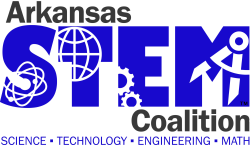Check out this fun ‘Bubble Construction Design Challenge’ activity from Family Science & Engineering!
|
|
|
Check out this fun ‘Bubble Construction Design Challenge’ activity from Family Science & Engineering!
|
|
|
According to fellow scientist, Joseph Priestly, Ben Franklin performed his famous kite experiment in June 1752. Franklin had been interested in “electric fire” for quite a while and had an on-going dialogue with other scientists of his day about the phenomenon. His famous key experiment established that lightning was a form of electricity.

There are a couple of myths about this famous experiment though. First, the kite experiment did not help Franklin “discover” electricity. Humans had known about electrical forces for more than a millennium. What it did do was establish the connection between electricity and lightning, and it ultimately led to Franklin’s refinement of the of the lightning rod. These devices are still used today on taller buildings to help channel the electric charge from a lightning bolt safely to the ground.
Also, neither Franklin nor the kite were actually struck by lightning. (He likely would have died if either had happened!) The wet hemp string that he attached to the kite was a good conductor of electricity, and they key attached to the string picked up electrical charge from the air in the active storm.
While we would not recommend that you replicate Franklin’s experiment, there are some easy ways to investigate static electricity at home and remember Franklin’s contributions to STEM.
Static Electricity Race
You’ll need: two aluminum cans, some masking tape, and two balloons.
Here’s what you do:
Have fun!
Be sure to check out more from Family Science & Engineering guidebook for more ideas to inspire engineering exploration!
In a video recorded interview, Pedro Martinez, superintendent of the San Antonio Independent School District, told Jan Morrison, founder of TIES, that it’s not just enough to “go back” to school and that it’s time to “be better.”
Martinez, who is also chair of the Chiefs for Change, offered broad comments about the role of ecosystems in improving schools, how rewarding and paying teachers a decent wage is a matter of social justice and how children are ready for learning and challenges.
The conversation with Morrison and Martinez was a follow-up to the Spring 2020 STEM Learning Ecosystems Community of Practice convening held in San Antonio where Martinez spoke in-person and challenged Ecosystem leaders to better engage their students.
Pottsville High School is accepting applications for an EAST/CS educator for grades 10-12. Applications will be accepted Thursday, June 10, 2021 12:00 AM – Thursday, July 15, 2021 11:59 PM (Central Standard Time).
Hope High School in Hope, Arkansas has several teacher positions open. Please contact the principal, Bill Hoglund, at [email protected] or 870-777-3451 ext 60.
There are also the following full-time educator positions available:
Please bear in mind that our previous announcement for a 1/2 Business, 1/2 Computer Science educator has been filled.
Heber Springs High School in Heber Springs, Arkansas has a 9-12 Computer Science teacher position available. For more information about open positions, please visit the school’s district position opening webpage here.
The Arkansas Department of Education (ADE) Office of Computer Science is pleased to announce the launch of the “Computers ARe Fun” video series. This series of videos, which will be released throughout the Summer of 2021, are intended for younger viewers, typically Pre-K – 5th grade, and will help children understand the basics of computers, including introductory computer literacy, some coding, low level hardware discussions, and appropriate cybersecurity and internet security topics. In addition, the series will share information about computer science and computing careers in a fun way.
Videos within the series will be posted to the ADE YouTube page in the “Computers ARe Fun” playlist as they are made available at http://csforar.info/ComputersAReFun.
Episode 1, “What is a computer?” has been posted and is available today!
While the first episode is more of an introduction to the series, subsequent episodes will delve into various computer science and computing topics. Some of the content shared will be accessible online, but much of it will focus on unplugged activities that children can explore with their family without the use of computing devices.
If you have any questions, comments, or want to get involved in the creation of a “Computers ARe Fun” video for this summer, please reach out to [email protected].
The Arkansas STEM (Science, Technology, Engineering, and Math) Coalition is the statewide hub of STEM information, created through a robust partnership of leaders from the corporate, education, government, and community sectors. Together we encourage, coordinate, and advocate for policies, strategies, and programs supporting excellence in STEM education and creating pathways to high-demand, highly-skilled, higher-paying jobs that expand the economy of Arkansas.
Phone: 501-425-9995
Email: [email protected]
Physical Address: 401 South Scott Street, Nonprofit Center #1, Little Rock, AR 72201
Mailing Address: PO Box 3142, Little Rock, AR 72203
